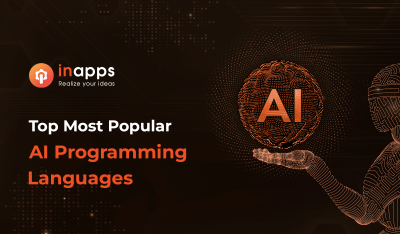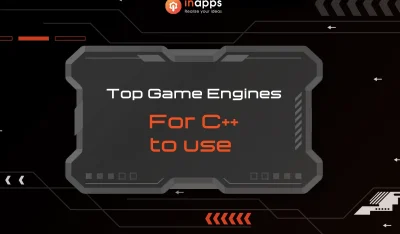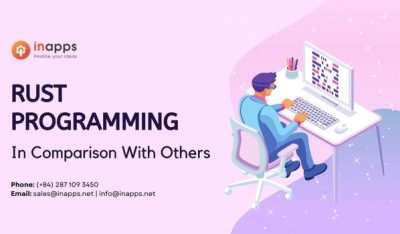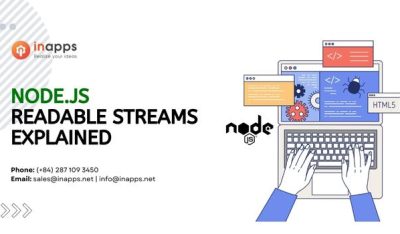- Home
- >
- Software Development
- >
- Build a WebAssembly App with Rust – InApps 2022
Build a WebAssembly App with Rust – InApps is an article under the topic Software Development Many of you are most interested in today !! Today, let’s InApps.net learn Build a WebAssembly App with Rust – InApps in today’s post !
Read more about Build a WebAssembly App with Rust – InApps at Wikipedia
You can find content about Build a WebAssembly App with Rust – InApps from the Wikipedia website
In this tutorial, we’re going to combine the power of WebAssembly and the flexibility of Rust programming language to build a very simple “Hello, World!” app.
One of the reasons why we’re going to use Rust is because the developers have an outstanding job of adding WebAssembly support to the language. And because Rust is slowly becoming the go-to language for web application developers, it makes perfect sense to combine these two into a power-house combination.
This time around, what we’re going to do is create a very simple web application using Rust and serve it up with the help of WebAssembly and Python. I’ll be demonstrating on Ubuntu Desktop 20.04, so if you use a different platform for your development needs, you’ll have to alter the process (specifically the installation steps) in order to make it work.
With that said, let’s get on with the howto!
Install Necessary Dependencies
There are several dependencies we’re going to have to install to make this magic happen.
The first thing to do is install the necessary compilers and other build tools with the command:
sudo apt-get install build-essential -y
Once that installation completes, install Python:
sudo apt-get install python3 -y
Our next task is to install Rust, which can be done with the rustup script like so:
curl --proto '=https' --tlsv1.2 -sSf https://sh.rustup.rs | sh
Once Rust is installed, source the environment variables with the command:
source $HOME/.cargo/env
Next, we need to install the wasm-pack tool (used for assembling and packaging Rust crates for WebAssembly). This is done with the command:
curl https://rustwasm.github.io/wasm-pack/installer/init.sh -sSf | sh
Creating your first WASM/Rust package
Now that we have everything up and ready to go, we can build our first package. Let’s call this package hello-newstack and create it with:
wasm-pack new hello-newstack
When this successfully completes, you should see printed out:
Generated new project at /hello-newstack
Change into the newly created directory with the command:
cd hello-newstack
We’ll now build the web target with:
wasm-pack build --target web
You should see output like:
Compiling proc–macro2 v1.0.28 Compiling unicode–xid v0.2.2 Compiling syn v1.0.75 Compiling log v0.4.14 Compiling wasm–bindgen–shared v0.2.76 Compiling cfg–if v1.0.0 Compiling lazy_static v1.4.0 Compiling bumpalo v3.7.0 Compiling wasm–bindgen v0.2.76 Compiling cfg–if v0.1.10 Compiling quote v1.0.9 Compiling wasm–bindgen–backend v0.2.76 Compiling wasm–bindgen–macro–support v0.2.76 Compiling wasm–bindgen–macro v0.2.76 Compiling console_error_panic_hook v0.1.6 Compiling hello–newstack v0.1.0 (/home/jack/hello–newstack) |
Now we’re going to create an index HTML page, create this new file with:
nano index.html
In that file, paste the following:
1 2 3 4 5 6 7 8 9 10 11 12 13 14 15 16 17 18 | <!DOCTYPE html> <html> <head> <meta charset=“utf-8” /> <title>New Stack Wasm Test Project</title> </head> <body> <script type=“module”> import { default as wasm, greet } from “./pkg/hello_newstack.js”; wasm().then((module) => { greet(); }); </script> </body> </html> |
Save and close the new file.
Now we need to run the Python HTTP server to serve up our new web application. Since we’re using Python3, that command is:
python3 -m http.server 8000
With the Python server up and running open a web browser on that same machine and point it to http://localhost:8000. You could also point any web browser on your network to http://HOST:8000 (Where HOST is the IP address of the hosting machine).
You should see a popup that says, “Hello, hello-newstack!” (Figure 1).

Figure 1
Click OK to close the app.
Using Cargo with WebAssembly
Let’s try a different approach, this time with Cargo. First, make sure to follow the installation steps above and then install libssl-dev with:
sudo apt-get install libssl-dev -y
With that dependency out of the way, install cargo-generate with:
cargo install cargo-generate
The above command will take some time to complete. Once it does, generate your first project with:
cargo generate --git https://github.com/rustwasm/wasm-pack-template
You’ll be prompted for a project name, at which point just type “hello.”
Now, run the command:
wasm-pack build
This will build everything for our web application, so we can now generate the web app with:
npm init wasm-app www
Change into the www directory with the command:
cd www
Open the package.json file with:
nano package.json
In the devDependencies section, add the following:
"hello-newstack": "file:../pkg"
One thing to note is that you’ll need to add a comma at the end of the line above “hello-newstack”: “file:../pkg”. Save the file and install all the necessary dependencies with:
npm install
After that completes, open the index.js file with:
nano index.js
Change the contents of that file to:
import * as wasm from “hello-newstack”; wasm.greet(); |
Run the app with:
npm run start
You can now point a browser to http://localhost:8080 to view the newly deployed web app.

Our web app is up and running.
Congratulations, you’ve just deployed your first WebAssembly app with Rust and cargo. Although this is quite basic, it should help to get you started on your WebAssembly journey.
List of Keywords users find our article on Google:
| v3 greet |
| magic nano paste |
| rust macro |
| rust wikipedia |
| cargo github |
| rust syn |
| rust build app |
| hire proto.io designers |
| hello body wikipedia |
| gt tool case |
| rust cargo |
| cargo rust |
| rust programming jobs |
| core v1 build |
| rust wasm |
| cargo install |
| rust io |
| rust web framework |
| rust web server |
| magic rust |
| rustup |
| build an app |
| custom application development |
| rust web app |
| rust macro 2022 |
| rust crates.io |
| x > 0 |
| webassembly github |
| comma ai github |
| rust build-dependencies |
| rust cfg_if |
| rust bindgen |
| rust cfg and |
| rust package |
| tommy init |
| proc-macro2 |
| rust cfg |
| rust dependencies |
| gt line tool case |
| crates rust |
| io rust |
| github.io games |
| rust get env variable |
| wasm jobs |
| cargo generate |
| environment variables rust |
| rust get env |
| rust utf8 |
| curl github |
| gt technologies jobs |
| offshore wiki |
| proto io templates |
| rust.io |
| wasm rust |
| cargo add dependency |
| dockers cargo |
| libssl dev |
| < > |
| rust webassembly |
| rust run script |
| rust language jobs |
| rust json |
| < |
| file io rust |
| mobile tam cargo |
| rust how to build |
| telegram software wikipedia |
| webassembly jobs |
| how to build in rust |
| rust read file |
| what specs do you need to run rust |
| < |
| hire proto io designer |
| rust import from another file |
| localhost;8000 |
| popup semantic ui |
| semantic ui responsive table |
| rust profile |
| rustup ubuntu 20.04 |
Source: InApps.net
Let’s create the next big thing together!
Coming together is a beginning. Keeping together is progress. Working together is success.



















